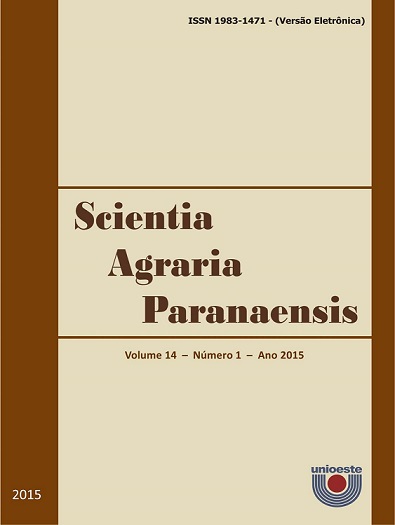Fungicides efficiency on white mold control in soybeans
DOI:
https://doi.org/10.18188/sap.v14i1.8869Keywords:
Controle químico, Glycine max, produtividade, Sclerotinia sclerotiorumAbstract
Among the diseases that affect soybeans, white mold stands out as one of the most important currently. Chemical control has been the most effective, given the fast disease evolution and requires farmers’ close attention, primarily in relation to the time of the product being applied, this being one of the most important factors for successful disease control. Thus, this study aimed to evaluate the effectiveness of the control of white mold by applying foliar fungicides in different reproductive stages, by analyzing the progress of the disease in soybean pathosystem versus Sclerotinia sclerotiorum. The experimental area presents a crop rotation system with soybean and cotton being adopted for over 10 years and with a history of occurrence of white mold. Four treatments (Witness, Cercobin, Sumilex and Frowncide) in a randomized block design with four replications. We evaluated the incidence and disease severity in stages R5.1, R5.3 and R5.5. At the end of the experiment, the weight of sclerotia and yield were evaluated. Treatments were applied at four times every ten days from the beginning of flowering. Data were submitted to analysis of variance by F test and the means were compared by Tukey test at 5% probability. The fungicides showed efficiency in relation to the variables studied, with exception of the incidence of disease severity. The most effective fungicide against the significant gain in productivity was Frowncide. Chemical control significantly reduced the severity of the disease.Downloads
Published
17-04-2015
How to Cite
CARDOSO, S. S.; LOPES, M. C.; JÚNIOR, J. F. da S.; BORGES, B. M. M. N. Fungicides efficiency on white mold control in soybeans. Scientia Agraria Paranaensis, [S. l.], v. 14, n. 1, p. 49–52, 2015. DOI: 10.18188/sap.v14i1.8869. Disponível em: https://e-revista.unioeste.br/index.php/scientiaagraria/article/view/8869. Acesso em: 4 jul. 2025.
Issue
Section
Scientific Article
License
Aviso de Direito Autoral Creative Commons
Política para Periódicos de Acesso Livre
Autores que publicam nesta revista concordam com os seguintes termos:
1. Autores mantém os direitos autorais e concedem à revista o direito de primeira publicação, com o trabalho simultaneamente licenciado sob a Licença Creative Commons Attribution que permite o compartilhamento do trabalho com reconhecimento da autoria e publicação inicial nesta revista.2. Autores têm autorização para assumir contratos adicionais separadamente, para distribuição não-exclusiva da versão do trabalho publicada nesta revista (ex.: publicar em repositório institucional ou como capítulo de livro), com reconhecimento de autoria e publicação inicial nesta revista.
3. Autores têm permissão e são estimulados a publicar e distribuir seu trabalho online (ex.: em repositórios institucionais ou na sua página pessoal) a qualquer ponto antes ou durante o processo editorial, já que isso pode gerar alterações produtivas, bem como aumentar o impacto e a citação do trabalho publicado (Veja O Efeito do Acesso Livre).
Licença Creative Commons
Esta obra está licenciada com uma Licença Creative Commons Atribuição-NãoComercial-CompartilhaIgual 4.0 Internacional, o que permite compartilhar, copiar, distribuir, exibir, reproduzir, a totalidade ou partes desde que não tenha objetivo comercial e sejam citados os autores e a fonte.


